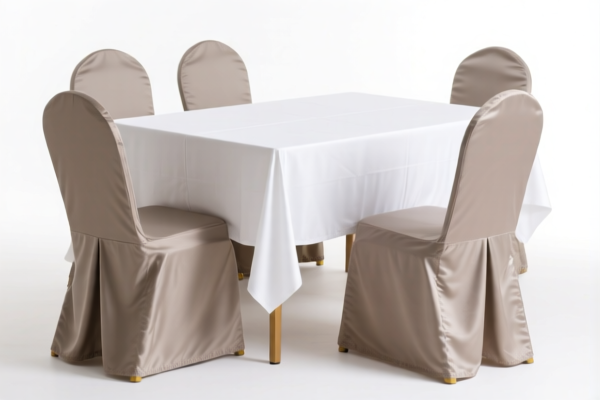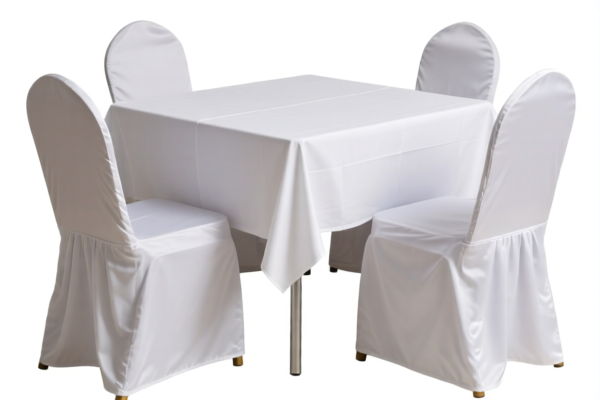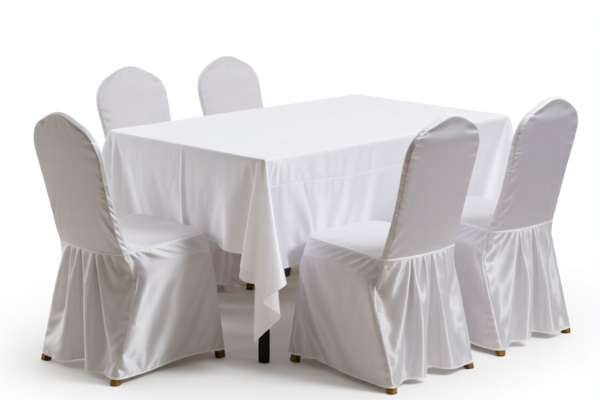| HS Code | Official Doc | Tariff Rate | Origin | Destination | Effective Date |
|---|---|---|---|---|---|
| 6304 | Doc | Error | CN | US | 2025-05-12 |




Okay, let's break down the classification and potential implications for your "Table Covers" declaration. Here's a detailed analysis, presented in a structured format to help you understand the HS codes and what to consider for customs clearance.
Understanding the HS Codes for Table Covers
You've received two potential HS code classifications: 63.04 and 6304.19. Let's examine each one:
1. HS Code: 63.04 – Linens
- Breakdown:
- 63: This chapter covers "Articles of textile materials". Essentially, anything made from woven, knitted, crocheted, or otherwise constructed textile fabrics.
- 04: Specifically refers to "Linens". This is a broad category encompassing various household textile articles.
- What it covers: This HS code is a parent category. It includes a wide range of household textile items like tablecloths, napkins, tray cloths, dishcloths, etc. It's a general classification.
- Implications: Using only 63.04 is often insufficient for accurate customs declaration. It's too broad. You'll likely need a more specific sub-classification.
- Tax Information: The system currently reports "Failed to retrieve tax information" and "Error" for total tax. This means we need more detail to determine the applicable duty rates.
2. HS Code: 6304.19 – Table Linens
- Breakdown:
- 63: As above, "Articles of textile materials".
- 04: "Linens" – household textile articles.
- 19: This is a more specific sub-classification within linens, specifically for "Table Linens, other". This generally covers tablecloths, napkins, placemats, etc., not specifically named elsewhere.
- What it covers: This HS code is more precise. It targets general cloth table coverings. It's a good starting point if your table covers are made of common textile materials like cotton, linen, polyester, or blends.
- Implications: This is a more accurate classification than 63.04 alone. However, the "other" designation means it's still important to confirm it's the correct fit.
- Tax Information: Similar to 63.04, tax information is currently unavailable.
Key Considerations & Next Steps
To ensure accurate classification and smooth customs clearance, please consider the following:
- Material Composition: Crucially, what are your table covers made of?
- Cotton: If 100% cotton, there might be a more specific sub-heading within 6304.11 (Table Linens of Cotton).
- Linen: If 100% linen, look at 6304.12 (Table Linens of Linen).
- Synthetic Fibers (Polyester, Acrylic, etc.): 6304.19 is likely appropriate, but the specific fiber content might influence the duty rate.
- Blends (Cotton/Polyester, etc.): 6304.19 is generally used, but the percentage of each fiber is important.
- Construction/Weave: Is it a simple woven cloth, embroidered, printed, or with special finishes? Special constructions might require different classifications.
- Single Piece or Sets: Are you importing individual tablecloths or complete table sets (tablecloth, napkins, placemats)? Sets might have a different classification.
- Declared Value/Single Price: The declared value per piece can influence the duty assessment.
- Country of Origin: Confirm the country of origin is accurately stated on your documentation.
- Certifications: Depending on the destination country, you might need certifications related to textile content (e.g., OEKO-TEX for harmful substances). Please check the import regulations of the destination country.
Recommendation:
Based on the information provided, 6304.19 is the more likely accurate classification assuming your table covers are general cloth coverings made of common textile materials. However, you must verify the material composition and construction to confirm this.
Action Items:
- Provide the exact material composition of your table covers (e.g., 60% cotton, 40% polyester).
- Describe the construction/weave of the fabric.
- Confirm the declared value per piece.
Once I have this information, I can provide a more precise HS code recommendation and help you understand the applicable duty rates and import requirements. I can also assist in identifying any necessary certifications.
Disclaimer: I am an AI assistant and cannot provide definitive customs advice. This information is for general guidance only. Always consult with a qualified customs broker or import specialist for accurate and up-to-date regulations.
Customer Reviews
No reviews yet.